Vancouver Goth Halloween events! Van Dusen Glow, Playland Fright Nights, Aesthetic Perfection, pumpkin patch.

Gourd heavens… your Pumpkin Queen is back!
Halloween season lasts only a short time, and I’m keen to celebrate it to the fullest. In October, Vancouver unveils several Goth-friendly events for All Hallow’s Eve — including haunted houses and glowing gardens.
Read on for my run-down of the spookiest Halloween activities in Vancouver, Canada. Plus, a happy reunion with Daniel Graves of Aesthetic Perfection, during his Into the Black concert tour!

No basic pumpkin spice lattes for this Goth… I pick my cucurbits from the source.
Fall Outfit: I wore a candy corn sweater by Chaser Brand to visit the pumpkin patch. I paired it with a black bowler hat, tights, a short skirt and platform boots.
Shop my style below:

Vancouver’s Lower Mainland has several pumpkin patches that you can visit in the autumn. I went to Richmond Country Farms as it is closer to the city and has plenty to do, including a farmer’s market and wine tasting.
To access Richmond’s fields of pumpkins, you must take a short “hay ride” (on a wagon-car with live music). On the way, we passed kitschy farm characters and displays. The “Transylvania” house was spooky… but if you ask me, the huge 1990s cell phone was scarier!

I’m in my element, surrounded by cheery orange pumpkins. Anyone who visits this pumpkin patch can choose one to take home, as part of the admission.

These fresh pumpkins are perfect for making pie. (Ours turned out amazing, with plenty of spices the way I like it).
The farm also has a corn maze… just watch out for Jack!
I’m pleased with this pretty pumpkin… as well as my new Apple iPhone 11, which took all the photos in this post. The battery life and camera are a major upgrade: love the Portrait Mode setting for photographs like this.
Wearing a bowler hat and Chaser Brand Halloween sweater. Fall fashion is by far my favorite.
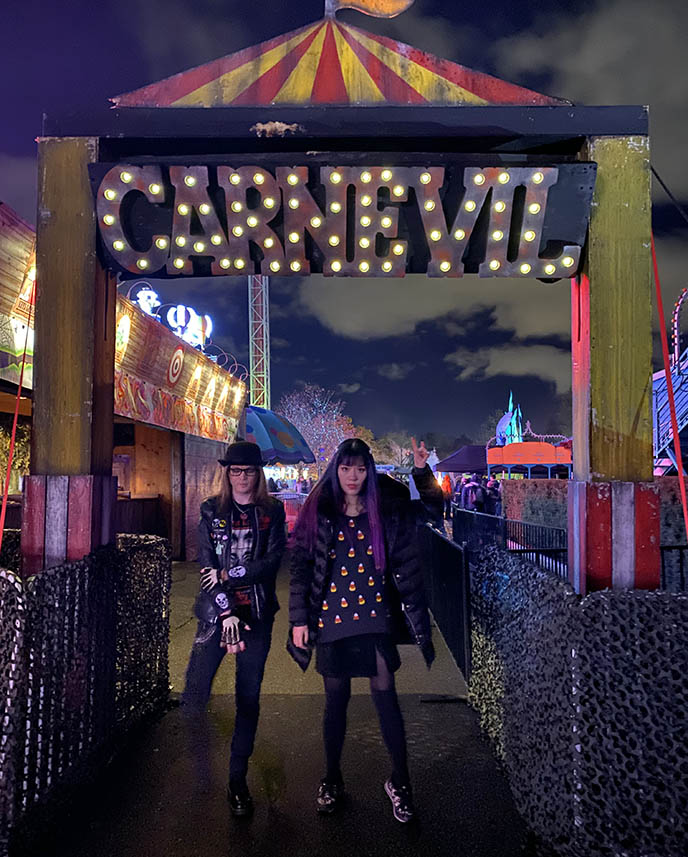
Now, let’s enter the Carn-Evil…
Every October, Vancouver’s PNE / Playland theme park transforms into Fright Nights. Their Halloween attractions include multiple haunted houses, and horror-filled spectacles.
(Speaking of… why is Rob’s leg dissipating into the ether?)

Love the frightful feeling of an amusement park after dark, with the rides lit up in neon and bathed by fog.
“I always feel like somebody’s watching me…” This photo is deja-vu of our Stanley Park Ghost Train escapade last year.

Krusty the clown has taken over the tent and turned into a neon rave…
(Can’t believe how good iPhone 11 photos look, with the low light setting!)

Stranger Things feels. Are you a fan of scary rides? Or do you prefer to ride the merry-go-round?

Be sure to catch the three nightly shows by Monsters of Schlock. The Great Orbax and Sweet Pepper Klopek perform painful stunts in the name of comedy — including stapling items to the face, and swinging a sledgehammer into a block covering the nether regions (above left!).
I was especially enthralled by Orbax and Pepper’s second show, which puts the spotlight on science. Pepper sat on the custom-built electric chair, and high voltage coursed through his body. The duo showed how he could turn lightbulbs on by grasping them, and use his tongue to light a flame!

Of course, we went to several of Playland’s haunted houses, each with a different theme or spin.
It was my first time doing a “3D haunted house,” where you put on glasses that distort your vision. This made it hard to tell whether a crazed inmate was a flat picture, a mannequin, or a live person… until she reaches out and tries to grab you!

The Fright Nights ticket also gives you access to the theme park rides. All aboard the rickety roller coaster, Music Express, swinging Pirate Ship, and Hell’s Gate (hail!)

One of the haunted houses was themed around phobias. The rooms represented various fears, such as giant spiders and snakes that lurch toward you.

As you’d guess, I was most freaked out by the germophobia room, which simulated a dirty toilet and sink! (Outside, this Die & Dine Diner display looks like a recipe for E. coli…)

Won’t you join our mad tea party, with a spinning teacup of poison?
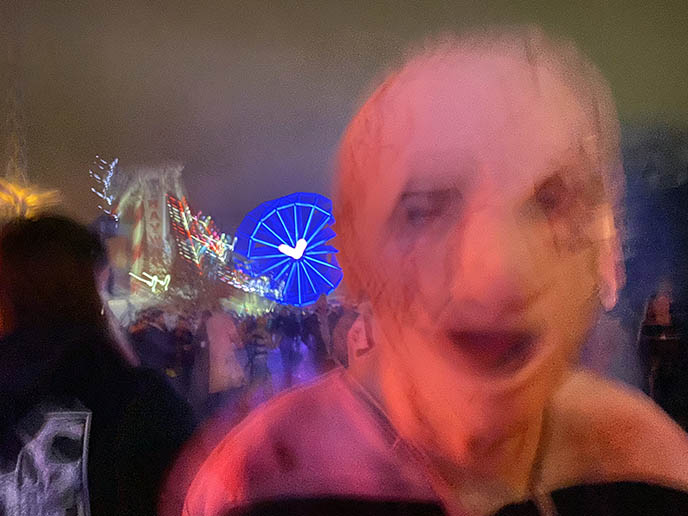
And this is the last photo I took before I died.
Like at Universal Studios Osaka Japan, the staff dresses up in frightening masks and runs around scaring guests!
PNE / Playland Fright Nights was a blast. You can join the fun at the theme park “Where Screams Come True” until October 31st.

I also had a hoot at VanDusen Glow in the Garden, where I strolled through mesmerizing Halloween displays and colorful lights.
I’m wearing a festive sweater by Chaser; click for more below:

The VanDusen Gardens transform into a Halloween wonderland every October. This year, the theme is centered on owls, who cast a “hootenanny” spell on the grounds and made them glow.
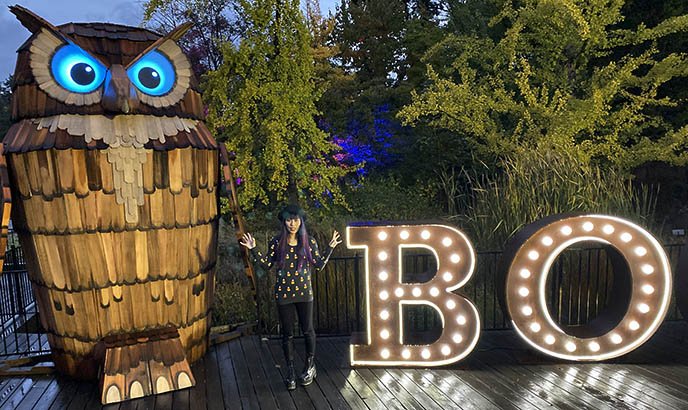
As you wander through the outdoor paths, you’ll encounter glowing creatures of the night (such as a giant glowing blue spider).

An illuminated scarecrow looks over the dark pond. (This image is more proof of the powers of the Apple iPhone 11 camera…)

The trail leads to intricately carved and glowing pumpkins, which look like owls and other forest animals. (Did you carve a Jack-o-Lantern this year?)
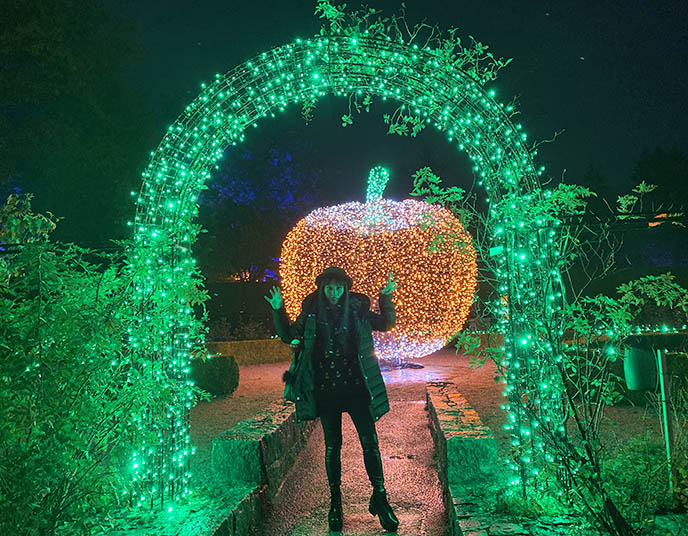
Cinderella vibes, in front of the enormous pumpkin lit by orange and green lights.

An evening at Van Dusen Glow in the Garden will surely get you into a Halloween mood. This seasonal event at Vancouver’s botanical gardens ends October 27.
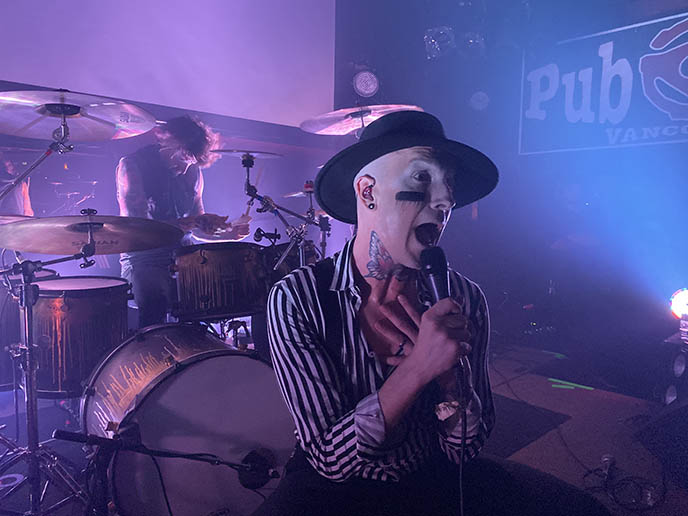
October has been good to me. I got to reunite with my friend Daniel Graves of Aesthetic Perfection, and watch his energetic show with openers Empathy Test.
(You might recall that we met up at Montreal Kinetik festival years ago, as well as Leipzig’s Wave Gotik Treffen!)
Aesthetic Perfection took over Vancouver’s Pub 340, as the fifth to last stop on their North American tour.

Aesthetic Perfection is a joy to see live. Daniel Graves is one of most engaging performers I’ve seen, and the venue let the crowd get right up to the stage to sing and jump along.
The band played songs from the new album, Into the Black: a gritty industrial yet melodic powerhouse, featuring musical collaborators like Richard Z. Kruspe of Rammstein.
Aesthetic Perfection also tore up the room with older favorites like the electro-synth bop of “Antibody.” Daniel conveyed the impressive range of his voice and songwriting throughout the night, coming back for an encore with the melancholic “All Beauty Destroyed.”
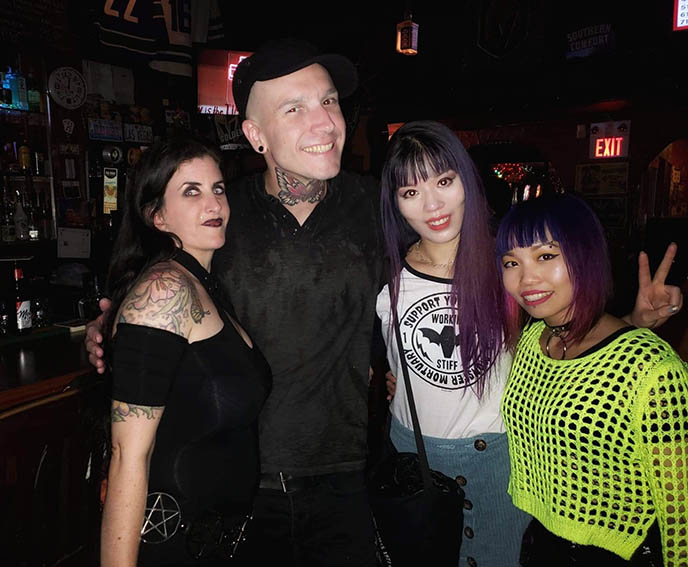
The room was buzzing after Aesthetic Perfection’s live: my friends agreed this was one of the best performances we’ve seen in ages. (For a glimpse of what we experienced at the front of the stage, enjoy these video clips in my Instagram post.)
Daniel is famously lovely to fans, and came out to the bar to hang out and give hugs.

Daniel Graves is bringing his spiffy moves and superhuman voice to Germany next. Take my word: this is a Goth concert you can’t miss!
You can find Aesthetic Perfection’s upcoming tour dates on their Facebook and Instagram. Give their new album Into the Black a listen, and may you get to experience the magic in person.
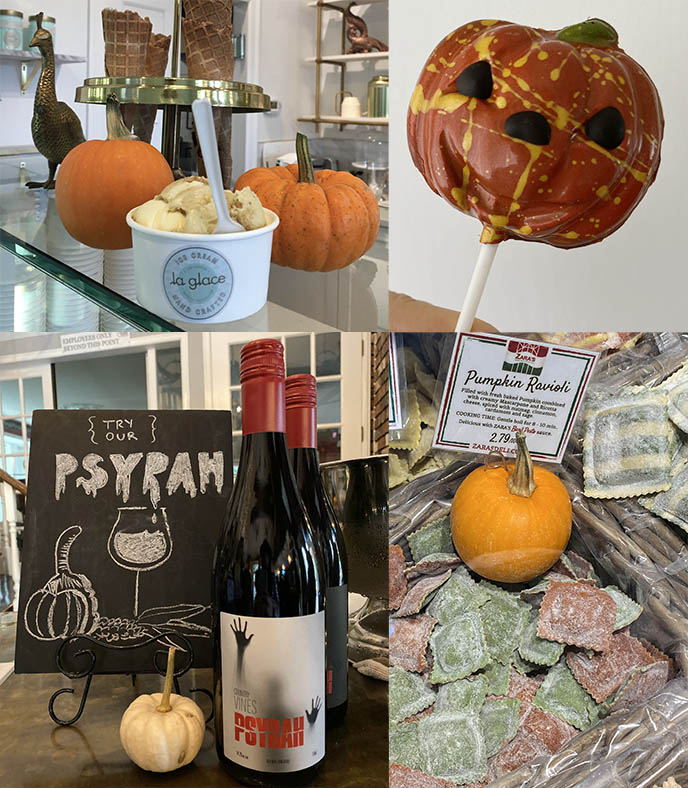
Let’s end with some snaps of the Halloween-themed food I’ve been indulging in this season.
Vancouver’s La Glace parlor released a pumpkin pie ice cream, while Mon Paris Patisserie offers a pumpkin caramel chocolate on a stick. I tried Psypah psycho red wine, and pumpkin ravioli too.
Plus, there’s all the freshly baked pumpkin pie I’ve been eating. With all these seasonal treats, I might turn into a pumpkin soon!

Now, it’s time to pack for Mexico, where I’ll be spending Day of the Dead. (Read about my upcoming Dia de los Muertos trip here.)

There’s no better way to get in the mood than by wearing sugar skulls. These creepy-cute accessories are from Cufflinks.com. Love how their lapel pin and silver cuff links add Gothic flair to an outfit.
(Cufflinks.com has accessories with every theme imaginable, and you can also customize items. See more skull styles from them below).
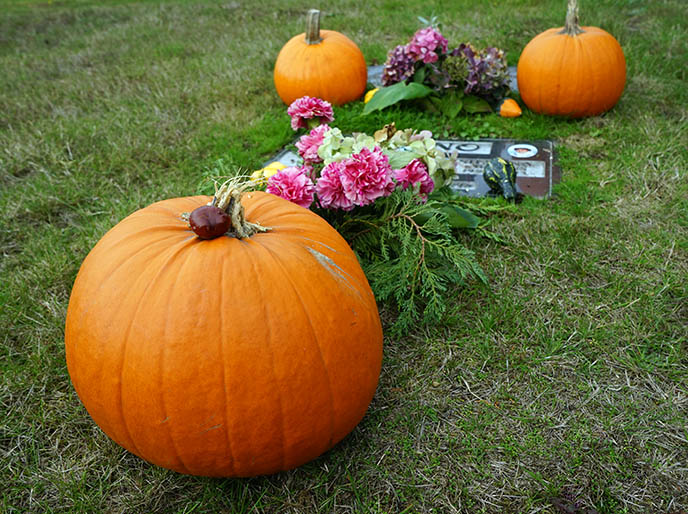
Psyched to be in the Yucatan (Merida and Campeche) and Mexico City, watching graveyard ceremonies and taking part in Day of the Dead parades…
Keep an eye to my social media @lacarmina to preview these Gothic travel adventures.

I leave you with some limited edition Halloween fashion: tis the season to get spooky. These designs are only available right now, so take a second to check them out below. Happy Samhain!
SHARE & COMMENT
Boston Goth travel guide! Yotel robot sci-fi hotel, Granary Burying Grounds skull tombstones, Edgar Allan Poe statue.

Once upon a midnight dreary… I was in Boston, getting spooky… with Edgar Allan Poe!
After my Purge television show appearance, I spent a few days in New England. Boston’s known as a preppy city, but leave it to me to find the darkest and quirkiest sides.
Outfit details: My faux fur leopard jacket and bat shirt are by Sourpuss Clothing. Burgundy faux leather leggings by UK Tights, platform black boots by Jeffrey Campbell. Click below for more of my style:

If you’ve got a Gothic bent and are visiting Massachusetts, then this Boston Goth travel guide has got you covered.
We’ll creep around the Granary Burial Grounds, home to spooky skull tombstones, and pay a visit to Edgar Allan Poe Square. We’ll also get fabulous at Six, the glamorous musical about Henry the VIII’s wives.
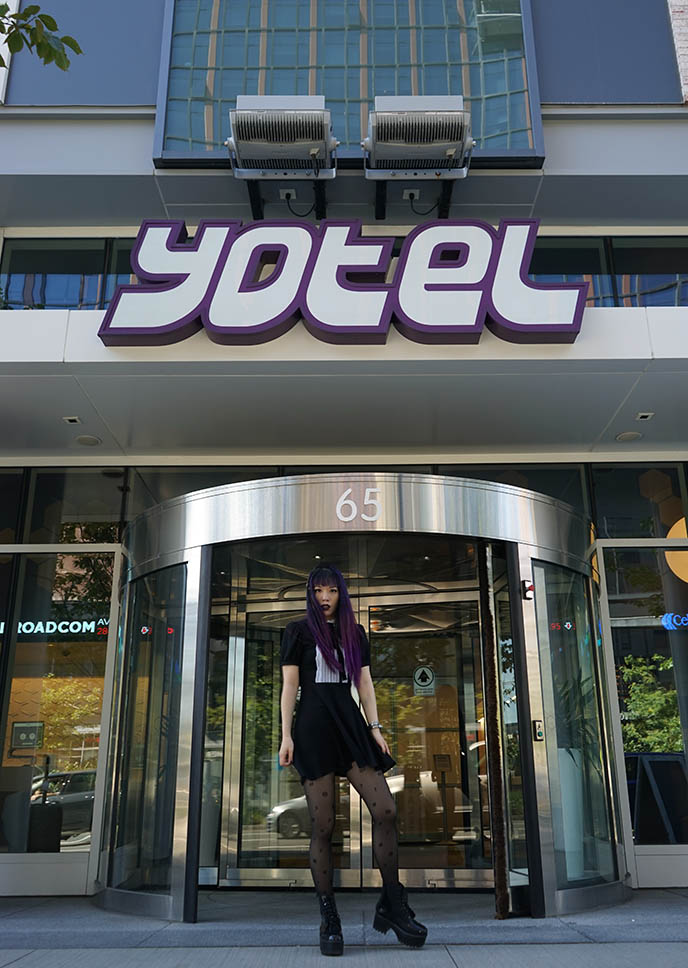
For an out-of-this-universe stay in Boston, there’s only one hotel worth teleporting to: Yotel!
This futuristic hotel speaks to my sci-fi soul. I stayed at Yotel in NYC for fashion week years ago, and was delighted to dock with them once again.

I adore Yotel’s hip decor, which looks like something out of a 1960s space opera. The lobby’s curving lines and white lights have a rocketship feel, and these “pillows” are like squishy asteroids.
My black and white dress is by Valfre (available here).
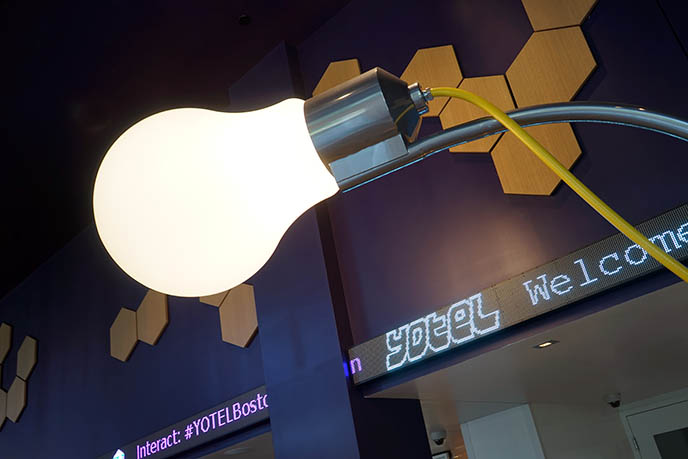
As we get closer to the reality of space travel, Yotel Boston gives a glimpse of what hotels may look like in the future. Guests can check in or out with self-service terminals, and float around the vibrant co-working space and cafe at any hour.
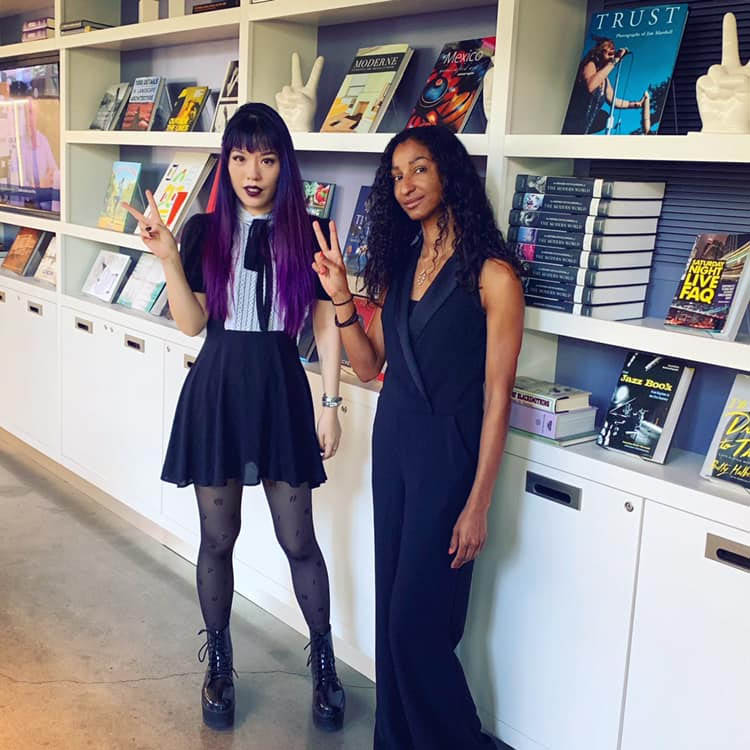
My long-time friend and travel comrade Lissette shares her first impressions. “Upon arriving at Yotel, I was impressed by the way the entrance looked like a space station. All of the furniture reminded me of the Jetsons and was complete with a robot.”
My “Wednesday Addams” dress is by Valfre; see more from this French designer below:
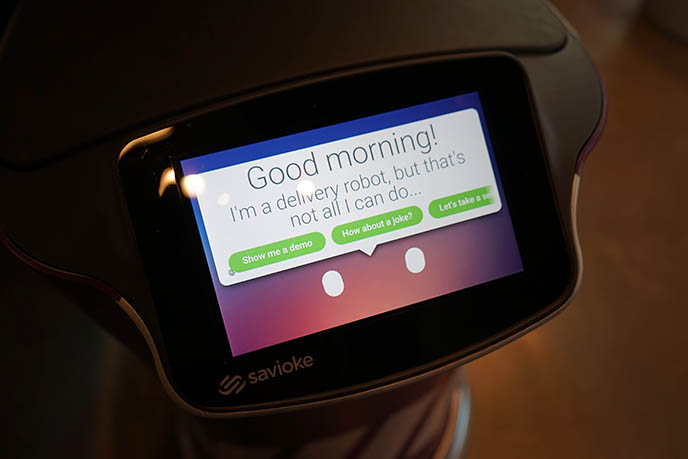
We were delighted to meet Yotel’s cute-faced robot when we checked in. As Y2D2 says, “I’m a delivery robot, but that’s not all I can do…” He can also tell jokes, perform demos, and take selfies with you!
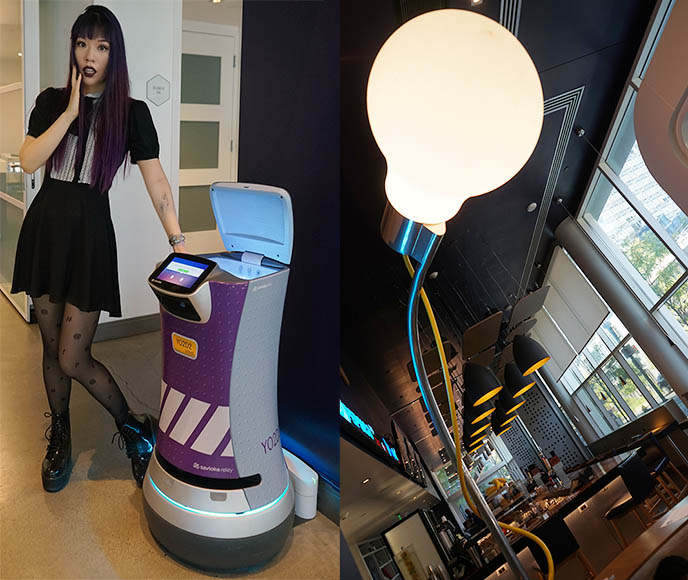
Yotel’s little purple robot can even bring items to your room, such as a toothbrush if you forgot one. Y2D2 opens up to reveal a compartment, where you can place items for delivery.

Lissette says, “We even got to see the robot in action delivering items to someone’s room on our floor.” It was amazing to see how Y2D2 could ride the elevator by himself, scoot past obstacles, and wirelessly ring the doorbell.
When you answer the door, his compartment opens so you can take you item. Don’t forget to say “Domo arigato, Mr Roboto.”
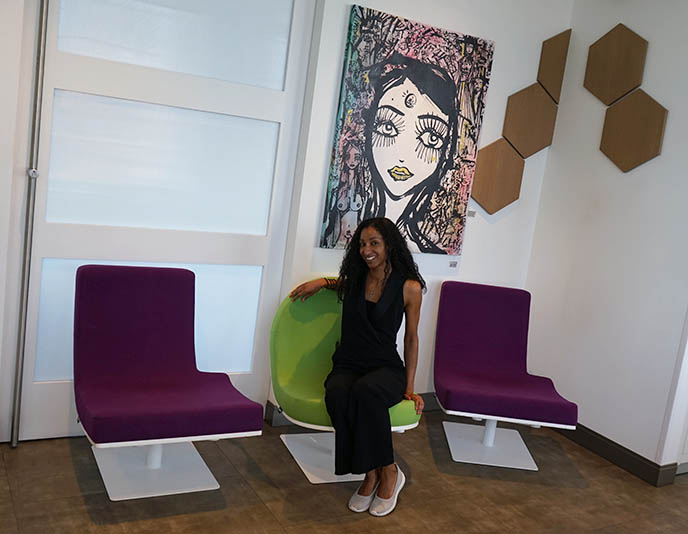
Yotel’s playful approach makes the hotel stand out. Even the chairs in the Sky Lounge spell out LOL!
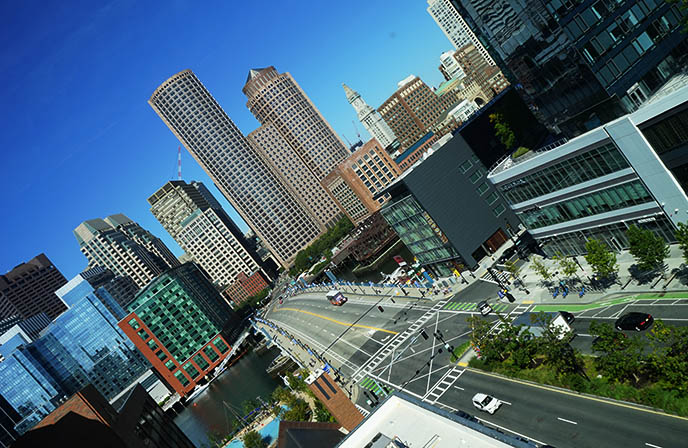
Yotel Boston is located in the Seaport, a vibrant waterfront area with many hip boutiques and restaurants.
As you can see, “The views from the rooms as well as the rooftop lounge area provided excellent snapshots of the city.” – Lissette
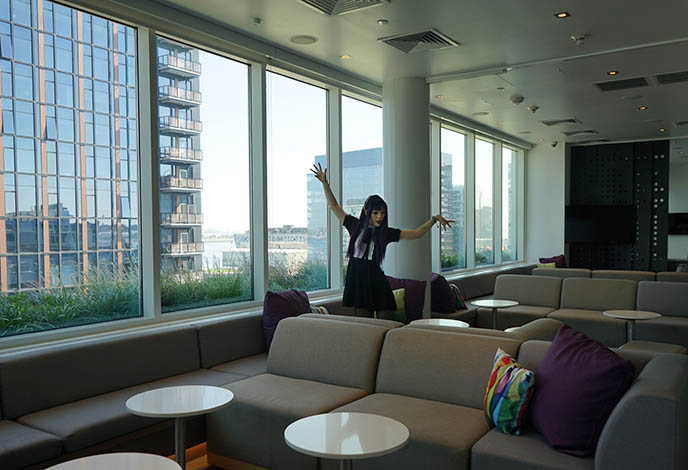
At night, we enjoyed a cocktail on Yotel Boston’s rooftop terrace. Outside, you get a brilliant view of the surrounding brick buildings and twinkling skyscrapers.

Lissette says, “Our room was super cute with bunk beds and a very futuristic bathroom setup and lights that could change colors. The glass enclosures in the bathroom supplied a surprising amount of privacy, and there was a curtain to separate the bathroom from the bedroom as well. The ability for the queen bottom bunk to have a range of reclining options added to the spaceship feel of the room.”

Yotel is like a 5-star spaceship: you sleep in a luxurious but compact cabin, with ingenious tech that helps maximize the space. For example, when you push a button, the bed unfurls. I was fond of this mod chair, which matched my hair color, and had striking views of South Boston’s brick walls.

Cheers to the friendly and accommodating staff at Yotel Boston, and the kind bartenders that knew their stuff.
(More from our space-age hotel at the end of this post.)

Now, let’s go from robots to pirates. (Did you have any clue that Boston had such odd attractions?)
I’ve visited Boston twice before, mainly to see the historic sites with family. This time, I was keen to get Gothic at the Granary Burying Grounds, the city’s most famous graveyard.

I hung out with famous Bostonian ghosts in late September. The sky was bright but there was a dusting of dead leaves on the tombs: perfection.
Founded in 1660, the Granary Burying Grounds is Boston’s third-oldest cemetery. The small Tremont Street plot as over 2000 grave markers, but as many as 5000 bodies lie here. (Or “lye,” as they wrote back in the 17th century.)
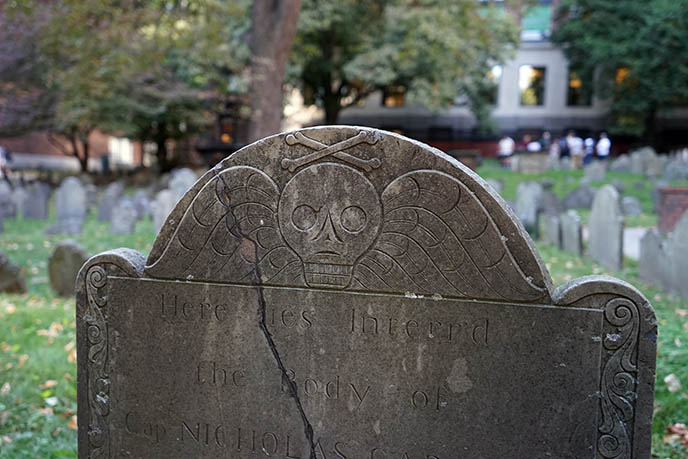
Some of the tablet-shaped tombstones are blank, or have words that got partially wiped out through time. However, many have a pirate Goth look, with grinning winged skulls and crossbones!
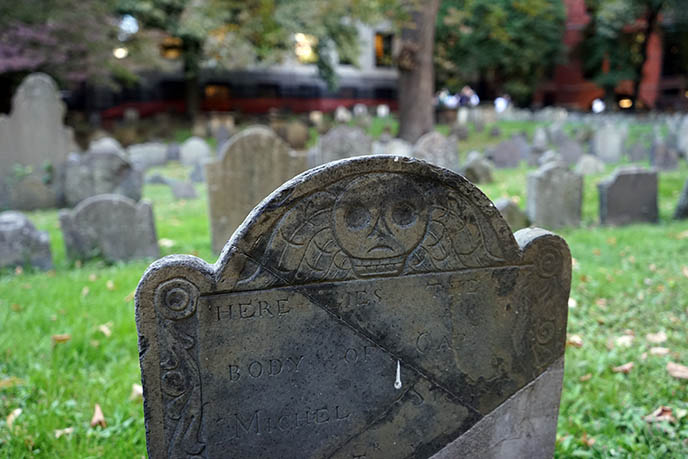
What’s the story behind these spooky grave-markers? This “death’s head” is know as the Soul Effigy. This represented the soul flying to the afterlife after death.

The Granary Burial Grounds are home to other odd monuments for the dead. The tallest one is an obelisk, erected in 1827 and dedicated to the relatives of Benjamin Franklin (a Bostonian).
Boston’s Granary is also the final resting place of Paul Revere, Samuel Adams, and John Hancock (his headstone is nowhere as large as his signature on the Declaration of Independence).

The Granary is worth visiting for its historic importance, but let’s face it — I’m here for skulls.
Unlike typical graveyards, you won’t see any angels, crucifixes or Virgin Mary statues. The Puritans were against religious imagery, so they expressed their beliefs in the afterlife through winged skulls on tombs. (Ironically, to our modern eyes, these carvings have an edgy Goth feel!)
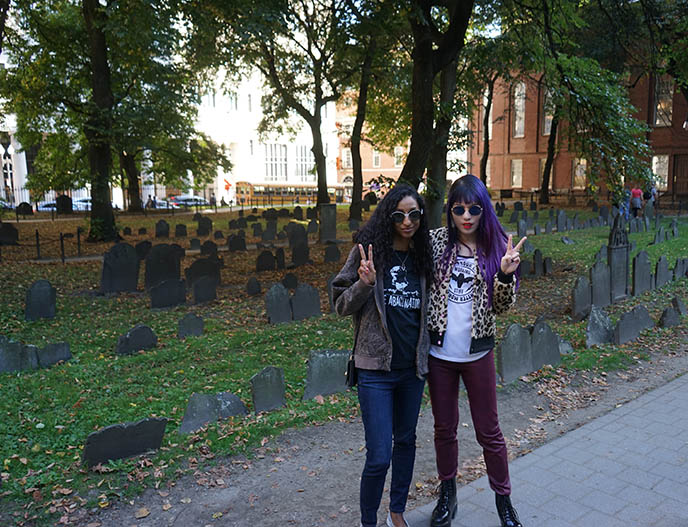
These rows of headstones, surrounded by fall leaves and Boston brick, give a Halloween atmosphere like nothing else. I can easily imagine RIP written on one of these upright slabs, and a hand sticking out to pull you underground!

Some of the 17th century headstones are now askew (perhaps the restless undead tipped them over?) The Soul Effigies are exquisitely carved into the stone tablets.

Looks like a vampire got buried among the American Puritans… (This above-ground coffin reminded me of the Romanian graveyard I visited in Bucharest.)

It was fun to read the engravings on the Granary headstones, written in old-time English. Each followed a straight-forward script: “Here Lyes Ye Body of X wife to Y, aged Z. Departed this life, date.” No RIP or fancy memorials to be found here.

In 2009, a visitor fell through the ground and discovered a secret stairway leading to a crypt! I wonder what other mysteries lie beneath the Granary Burying Ground…

Looks like it’s a pirate life for these Puritans. In fact, the skull and crossbones were a popular “memento mori” symbol in the 16-17th centuries. They remind us that no matter our status, it’s impossible to avoid the Grim Reaper.

Some of the Death’s Head or Soul Effigies have scowling faces, while others are grinning and cheery. The one on the right looks sad: was he an emo Puritan boy?
The headstone “emoji” may have reflected the dead’s fate, or outlook on the afterlife.

Can you tell I’m in my autumn element? Lissette took this behind the scenes snap of me. (I’m shooting with my Sony A7 mirrorless camera. Highly recommended for travel, as it’s lightweight but full frame and brilliant quality).

This “grave” place is a must-see in Boston, MA.
Lissette and I also went to Salem, Massachusetts and photographed the cemetery there (along with all the witchy things). Stay tuned for this story soon!
Time to sign off on a fabulous note… We were thrilled to see Six the Musical at the American Repertory Theater!
This new show re-imagines the 6 wives of Henry the Eighth as sassy pop queens, who compete to see who had the worst marriage with the king. Each belts out a number about her life story, with a different musical feel (ie, inspired by Sia, Beyonce, Britney — and all are catchy earworms.)
Lissette raves: “We made the trip to Cambridge/Harvard Square to witness the histo-remix that was Six, the musical. The stage picture was just what the musical called for, with the six wives standing in formation backed by a very talented four-piece band of all women presenting this “her-story.”
“Coming from Chicago, it was great to see Courtney Mack, a fellow Columbia College Chicago grad, as Katherine Howard. Her number, “All You Wanna Do,” is an excellent example of how well the choreography matches the lyrics and mood of each song. As she sings about the different relationships she has with men throughout her life, the other queens grab at and touch her body in an increasingly more aggressive way as it becomes clear what it is that “[t]he only thing [guys] wanna do is…”
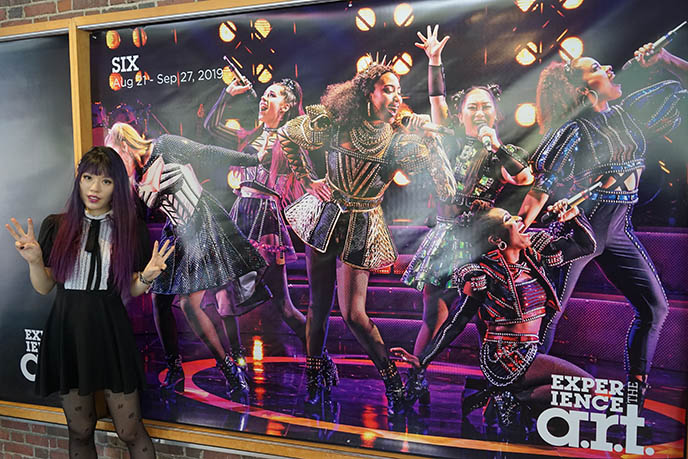
(As you can see above, the Tudor pop superstar costumes were pure fabulousity! My dress is no match for these royal designs.)
Lissette continues: “It was most enjoyable to watch the energy and execution Brittney Mack brought to the ensemble. Her Anne of Cleves was really fun to watch and deftly played. Although her queen profile was modeled after Nicki Minaj, the moment when she showcased her operatic range was a pleasant surprise in the middle of a pop musical.”
“Her song, “Get Down,” did an amazing job of overlaying contemporary social media vernacular on top of the history (Henry VIII expressing interest in Anne because he saw her portrait, but then rejecting her in person). That is such a common experience for people who interact with dating apps and the online swipe n’ match game. This song really brought the experience of the queens into the modern context.”
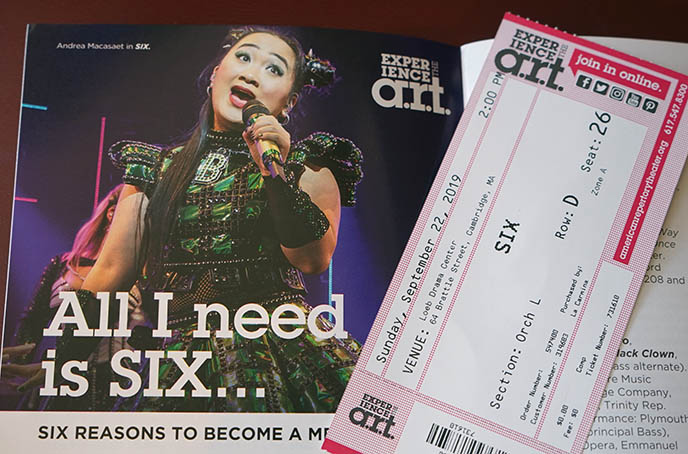
“Andrea Macasaet (above) was charming as Anne Boleyn. The number of times she reminds us that she was beheaded was provided necessary levity to the competition about who was treated the worst by Henry.”
“The actors brought a strong level of musicality and emotion to each of the numbers — it was really easy to want each of them to win the competition. Like the choreography, the costumes were well matched to the personality and style of each queen.
Six was a complete theatrical statement that spanned different kinds of pop while staying true to expectations of musical structure, with full cast numbers at the top and bottom of the show, and a solid variety number in the middle with “House of Holbein.”
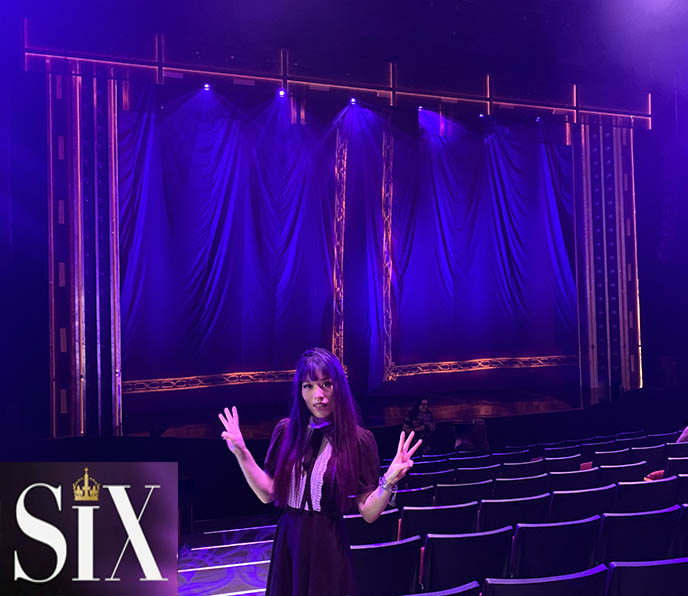
“The surprise encore medley paying homage to each of the queens’ songs was really fun. The finale song, “Six” is a great conclusion to the show and the refrain was another representation of why this cast and the band were all so talented. They put on a great show that blended history with pop culture in the same way that Hamilton married history with hip hop. I can’t wait to see what is next from writers Toby Marlow and Lucy Moss.”
I think we’ve given you more than six reasons to see Six the Musical!The show is currently touring the world, with runs in London, New York, Australia, Chicago, Edmonton and Minnesota. You heard it here first — this is a feminist powerhouse that can’t be missed.

Before we fly away from Boston, let’s strike a pose at Edgar Allan Poe Square. This life-sized statue was unveiled in 2014, to commemorate the Boston-born horror writer. (Address: Boylston St & Charles St, Boston, MA)
I hope Edgar liked my punk-Goth outfit. My faux fur animal print jacket and bat mortuary shirt are Sourpuss Clothing, burgundy faux leather leggings by UK Tights, boots Jeffrey Campbell. See details below:

Poe is best known for his spooky short stories, and poem “The Raven” published in 1845. The statue, created by Stefanie Rocknak, shows the author strolling with a long coat. A raven perches on his suitcase, which is bursting with books and papers.
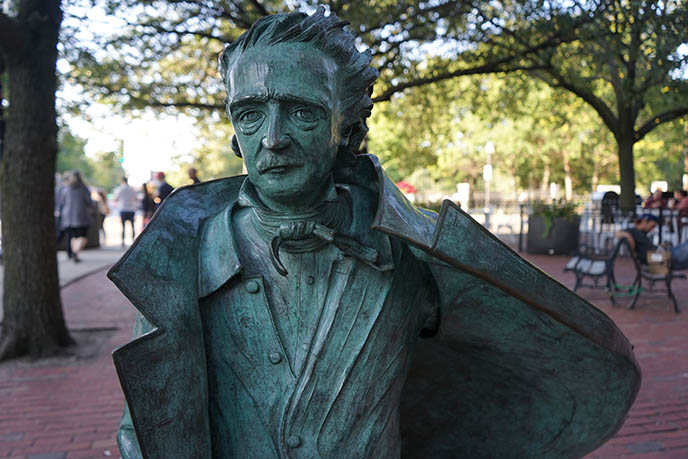
Fun fact: Edgar Allan Poe had a bitter relationship with the city of Boston and its literary elite. He claimed to have made a suicide attempt here in 1848, and wrote “Their pumpkin pies are delicious. Their poetry is not so good.” (This man… he’s as Goth as you can get!)

The Edgar Allan Poe statue and Granary Burying Grounds are a short walking distance apart, so you can easily visit both in an afternoon. Be sure to take a stroll in the lovely Boston Common park as well.

We also stopped for dinner at the nearby Union Oyster House, which has been open since 1826, and is the oldest continuously running restaurant in the USA.
Although many tourists come here, the historic wood building and artifacts on the walls are worth admiring. Most importantly, the food is excellent: we feasted on haddock, blackened cod, broccoli, and warm cornbread (their clam chowder is also notable).
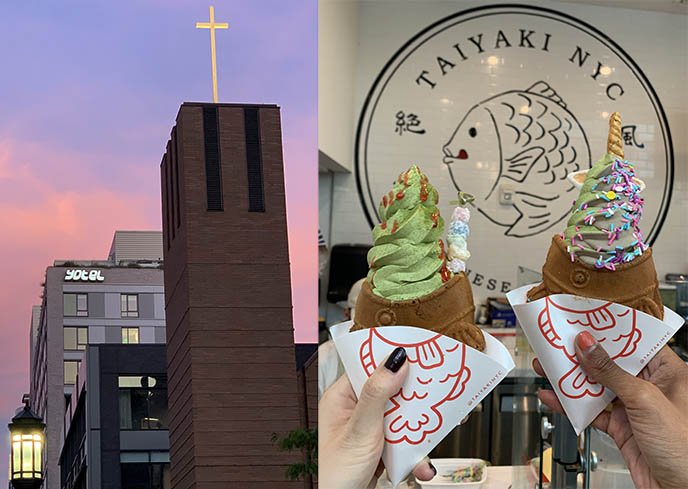
As the sun set, we wandered back to South Boston where we were staying. Feeling the urge for something sweet, we munched on unicorn taiyaki (Japanese red bean waffles shaped like a fish) with matcha ice cream — so good.
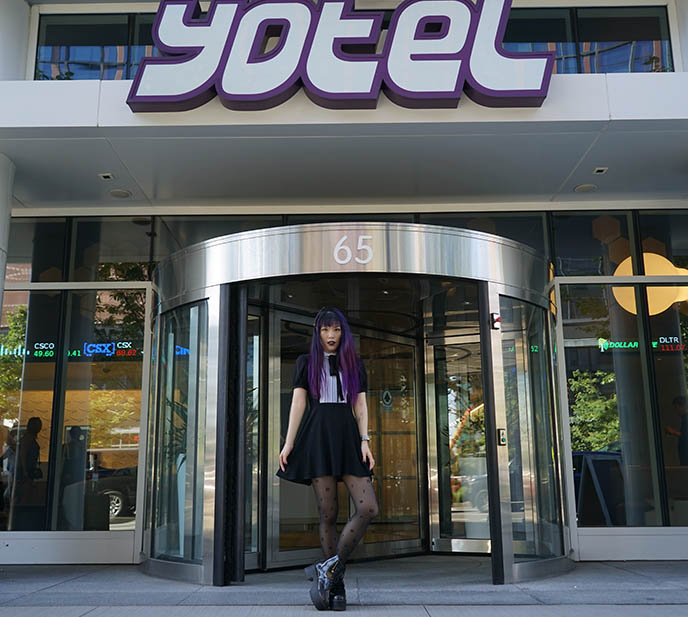
Domo arigato, Mr Roboto and the team at Yotel Boston for welcoming us through these space-y revolving doors.
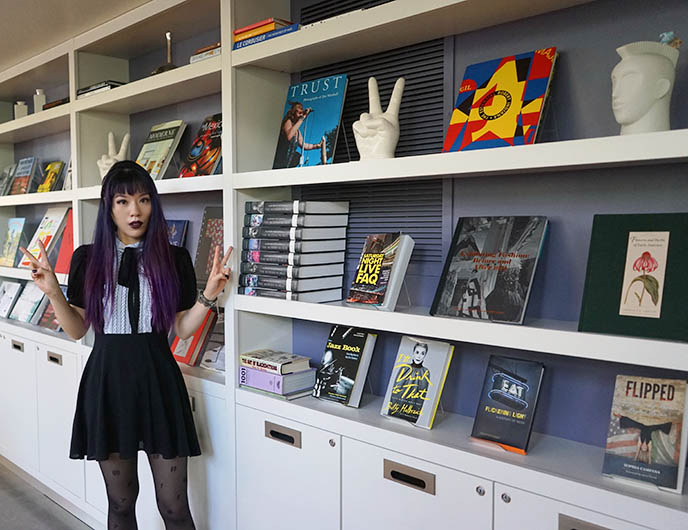
I can’t help but feel invigorated every time I stay with Yotel. The compact space-age rooms are fun to share with friends, and the public spaces are full of quirky books and design objects.
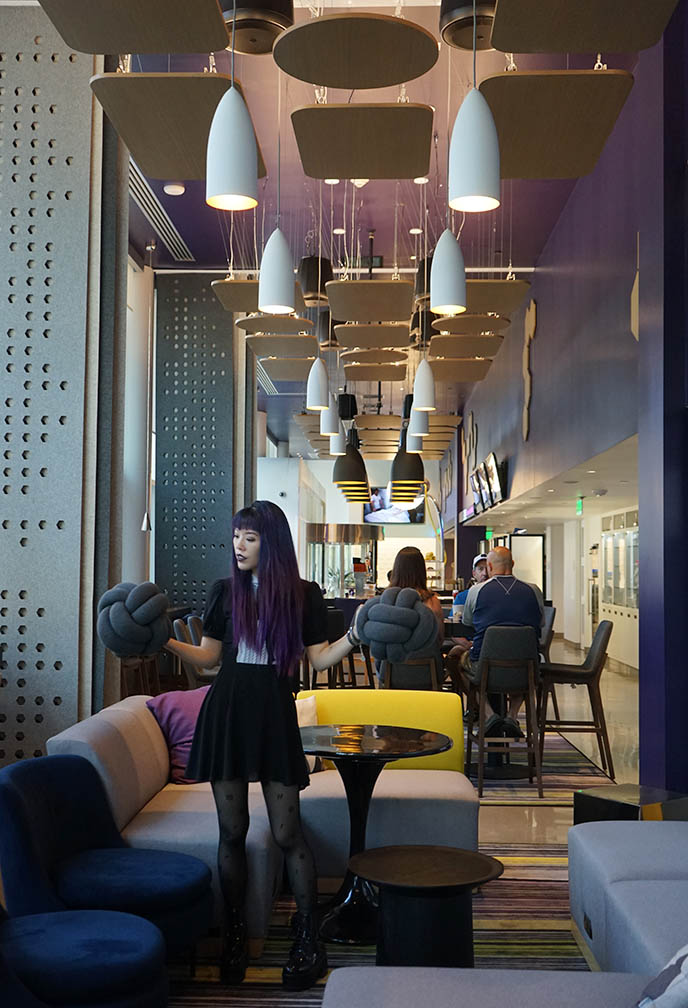
Did you realize Boston, MA was such an eccentric and alternative destination? Also, what are these balls for? (Find my Wednesday Addams dress here.)
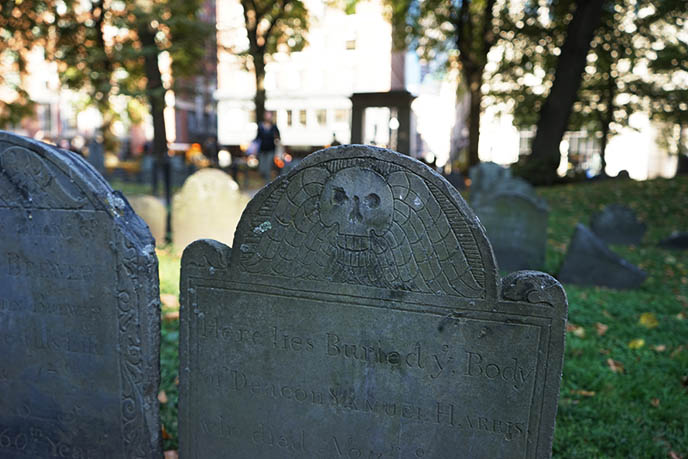
“Here lies buried y body…” I have tons of Halloween coverage still to come for you, including our spellbinding escapades in Salem, Massachusetts. Isn’t this the best time of year, by far?

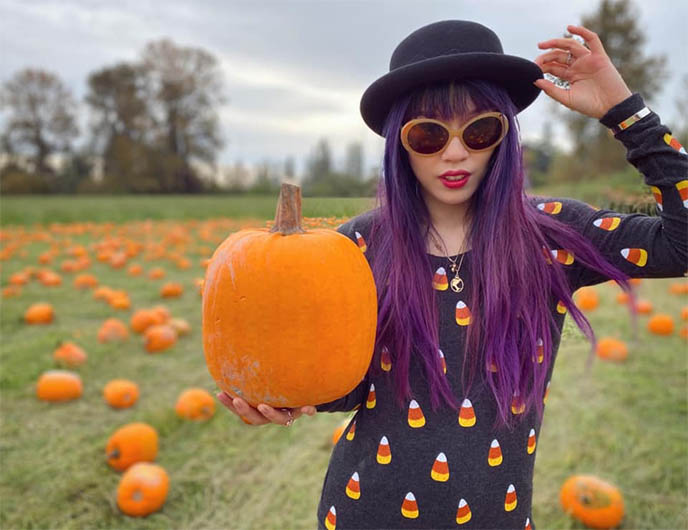


 LA CARMINA
LA CARMINA






